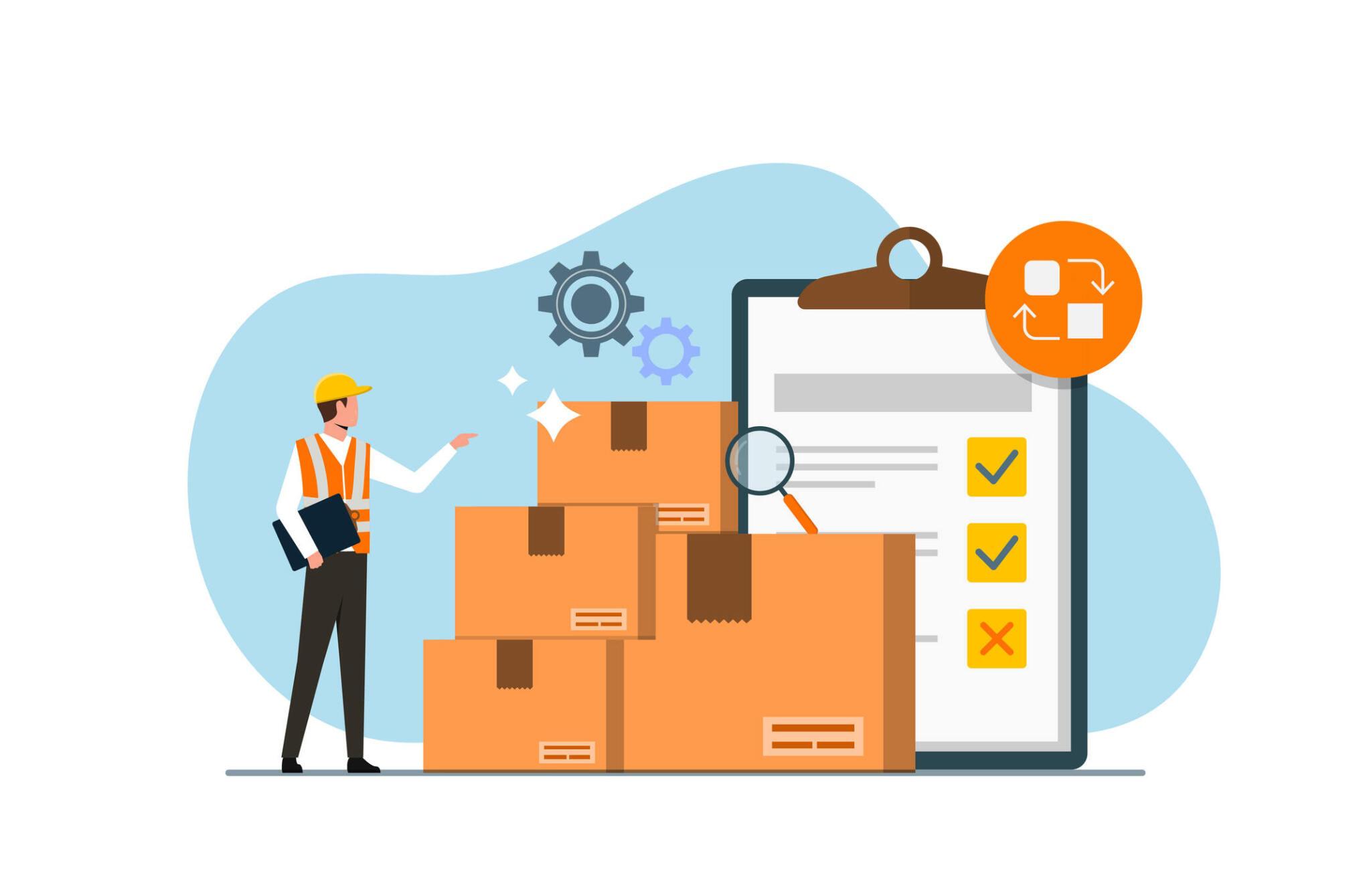In today’s highly competitive business environment, managing supplier relationships effectively is crucial for achieving operational excellence and long-term success. Supplier Relationship Management (SRM) is a strategic approach that focuses on managing and optimizing an organization’s interactions with its suppliers. By fostering strong relationships and collaboration with suppliers, businesses can enhance their performance, reduce costs, and drive innovation.
Components of a Supplier Relationship Management Framework
A solid Supplier Relationship Management (SRM) framework is key to getting the most value from supplier relationships.
Below are the main parts of a good SRM framework:
Supplier Segmentation
By dividing suppliers into groups based on their importance and value, businesses can use their resources more effectively. This means giving more attention to important suppliers and managing each group in a way that fits their role.
Criteria for Segmentation
To start, you need to decide how to group your suppliers. Here are some common ways to do it:
- Supplier Size: Look at how big the supplier is. Larger suppliers might offer more stability and a wider range of services, while smaller ones might be more specialized or flexible.
- Spend Volume: Check how much money you spend with each supplier. This helps you focus on the ones that take up a large part of your budget.
- Strategic Importance: Identify which suppliers are crucial for your business operations or innovation.
- Performance History: Review past performance, such as delivery reliability, quality of goods or services, and responsiveness. This tells you how dependable each supplier is.
Segmentation Models
Use segmentation models like the Kraljic Matrix to categorize suppliers:
- Strategic Suppliers: These are very important and have high supply risk. You need strong relationships and ongoing risk management with them.
- Leverage Suppliers: These are important but have low supply risk. Since there are many options, you can negotiate better deals.
- Bottleneck Suppliers: These have low importance but high supply risk. They can cause major disruptions, so you need backup plans.
- Routine Suppliers: These have low importance and low supply risk. You manage them with simple processes and minimal resources.
Benefits of Supplier Segmentation
Segmentation offers several benefits that improve your supply chain:
- Tailored Management Approaches: You can use different strategies for different supplier categories, from close partnerships to basic transactions.
- Better Resource Allocation: Knowing which suppliers are crucial helps you allocate resources like time and money more effectively.
- Focused Relationship Building: Build strong relationships with key suppliers for collaboration and growth, while keeping an eye on routine and bottleneck suppliers to ensure they meet your needs.
Supplier Performance Management
Tracking and managing how well suppliers perform is crucial. Using key performance indicators (KPIs), businesses can make sure suppliers meet the needed standards and support business goals. Regular reviews help identify both problems and high performers, ensuring continuous improvement.
Key Performance Indicators (KPIs)
First off, we need to figure out what we’re looking for from our suppliers. We call these Key Performance Indicators (KPIs). Think of them as the important things we need our suppliers to do right. Stuff like delivering on time, making sure the quality is top-notch, and keeping costs in check. These are the markers that show us if our suppliers are hitting the mark.
Performance Review Process
But just identifying these KPIs isn’t enough. We’ve got to keep tabs on how our suppliers are doing. That’s where performance reviews come in. We sit down regularly and take a good look at how our suppliers are performing. We want to see what they’re doing well and where they might be falling short. And if there are any issues, this is the time to talk them out and figure out solutions. It’s all about keeping things on track and making sure everyone’s on the same page.
Continuous Improvement Strategies
We should constantly brainstorming ways to help our suppliers do their jobs even better. Maybe it’s tweaking a process here or investing in some new tech there. These improvements not only make things smoother for us but also strengthen our relationships with our suppliers. It’s all about working together to keep getting better.
Related: 7 Proven Tips for Mastering Supplier Assessments
Supplier Risk Management
It’s important to find and reduce risks linked to suppliers to keep the supply chain stable and avoid disruptions. This involves checking for potential issues like financial troubles or supply delays and making plans to handle them. Being proactive helps maintain a steady and reliable supply chain.
Identifying Potential Risks
We gotta be smart and watch out for stuff like when a supplier might be struggling with money, or if there’s some political drama going on that could affect their operations. And don’t forget about natural disasters – they can really throw a wrench in things too.
Risk Assessment Tools
Luckily, we’ve got some cool tools in our toolbox to help us figure out what’s what. One of them is called SWOT analysis, where we look at our supplier’s strengths, weaknesses, opportunities, and threats. It’s like a dashboard of what’s going on with them. Plus, we’ve got all these matrices that help us rank risks based on how likely they are and how much of a punch they could pack.
Mitigation Strategies
Now that we know what might go wrong, it’s time to get cracking. One smart move is to diversify our options – instead of relying on just one supplier, we should spread out and work with different ones to lower the risk. Plus, it’s crucial to have a backup plan in place for when things don’t go as planned. By staying alert and prepared, we can keep the supply chain running smoothly, no matter what comes our way.
Supplier Collaboration and Innovation
Working closely with suppliers encourages the development of new products, services, and processes. This collaboration leads to a competitive edge. Open communication and mutual respect allow suppliers to share innovative ideas that benefit both parties.
Building Strong Partnerships
To make this happen, we’ve gotta build solid friendships with our suppliers. It’s not just about buying stuff from them; it’s about becoming buddies who trust each other and want to grow together. We spend time getting to know each other, sharing our goals, and making sure we’re all on the same page. With clear communication and mutual respect, these friendships become super strong, helping us tackle anything that comes our way.
Joint Innovation Programs
We’re not just waiting for great ideas to magically appear. Nope, we’re getting in there and teaming up with our suppliers to brainstorm, experiment, and make awesome new products and services. When we work together like this, we come up with stuff that’s way cooler than anything we could’ve come up with on our own.
Benefits of Implementing SRM
Implementing a good Supplier Relationship Management (SRM) system offers many benefits that can make a big difference in a company’s success.
Cost Efficiency
Managing supplier relationships well can save money. By working closely with suppliers, businesses can get better deals and reduce buying costs. This means they can buy more for less money. Good SRM also helps manage inventory better, so companies don’t end up with too much or too little stock.
Quality Improvement
Strong supplier partnerships lead to better quality materials and services. When companies and suppliers understand each other well, suppliers are more likely to meet quality standards. This results in fewer defects and higher quality products. Regular feedback and reviews help maintain and improve these standards over time.
Innovation and Growth
SRM is also about encouraging innovation and growth. Working closely with suppliers allows companies to use their expertise and new technologies. This teamwork can lead to the development of new products and services, expanding the company’s offerings and market reach. Suppliers can also provide valuable insights into market trends and new materials.
Risk Mitigation
Effective SRM includes strategies to manage risks. By regularly assessing supplier performance and stability, businesses can identify potential problems early and take action to avoid disruptions. Developing backup plans and having multiple suppliers can help keep operations running smoothly, even during unexpected challenges. Strong relationships with suppliers mean they are more likely to offer support during tough times.
Steps to Develop an Effective SRM Framework
To build a strong Supplier Relationship Management (SRM) framework, follow these key steps:
Identifying Strategic Suppliers
First, figure out which suppliers are crucial to your business. These suppliers provide essential products or services that are vital to your operations. Look at their capabilities, market position, and any potential risks. Focus on these key suppliers to make sure they support your long-term business goals.
Related: Strategic Sourcing in Supply Chain Management
Setting Clear Objectives
Set clear, specific goals for your SRM program. These goals should match your overall business strategy. They could include targets like reducing costs, improving quality, making your supply chain more resilient, and fostering innovation. Make sure your goals are specific, measurable, achievable, relevant, and time-bound (SMART). Clear goals help keep everyone on the same page and moving in the right direction.
Establishing Communication Channels
Good communication is essential for a successful SRM framework. Set up strong communication channels to ensure smooth information flow between you and your key suppliers. This can include regular meetings, integrated IT systems, and collaborative platforms for real-time data sharing. Effective communication builds trust and collaboration, and it helps address issues quickly.
Implementing Performance Metrics
Create clear performance metrics and Key Performance Indicators (KPIs) to track and evaluate supplier performance. These should cover delivery times, quality standards, cost control, and innovation efforts. Regularly review these KPIs to see how your suppliers are doing, find areas for improvement, and make informed decisions. Good performance metrics help keep everyone accountable and drive continuous improvement.
Best Practices for SRM
let’s break down some top-notch tips for Supplier Relationship Management (SRM) that can really level up your game in the supply chain world.
Effective Communication
First off, you gotta make sure you’re talking to your suppliers. Keep those lines of communication wide open. It’s all about making sure everyone’s on the same page and working together smoothly. Whether it’s sorting out deals or solving problems, clear and open communication is key to keeping things running smoothly.
Transparency and Trust
In the supply chain game, honesty and trust are like gold. It pays to be straight-up with your suppliers. When we’re transparent about how things work, the trust builds. And with trust comes stronger relationships that can weather any storm.
Regular Assessments and Feedback
Regular check-ins and feedback sessions keep things ticking. We take a good look at how our suppliers are doing and give them pointers on how to do even better. It’s all about getting better together, day by day.
Conclusion
In conclusion, Supplier Relationship Management is a vital component of modern business strategy. By implementing a robust SRM framework, businesses can optimize supplier performance, reduce costs, and drive innovation. Effective SRM requires a combination of strategic planning, effective communication, and the use of technology to achieve the desired outcomes.
FAQs – Supplier Relationship Management
What is Supplier Relationship Management?
Supplier Relationship Management (SRM) is a strategic approach to managing an organization’s interactions with its suppliers to optimize performance, reduce costs, and drive innovation.
How does SRM benefit a business?
SRM benefits businesses by enhancing cost efficiency, improving product quality, driving innovation, and mitigating risks.
What are the main components of an SRM framework?
The main components of an SRM framework include supplier segmentation, performance management, risk management, and collaboration and innovation.
How can technology enhance SRM?
Technology enhances SRM by providing software solutions for streamlining processes, using data analytics for insights, and incorporating future trends like AI and blockchain for advanced management capabilities.
What are the common challenges in SRM?
Common challenges in SRM include poor communication, lack of clear objectives, inadequate risk management, and resistance to change. Overcoming these challenges requires strategic planning, investment in technology, and fostering a culture of collaboration.

Aftab Khan is a logistics specialist with over forty years of experience in all aspects of supply chain and logistics management. He is an engineer by training and holds an MBA, besides several certifications from APICS/ASCM, ISCEA, and BRASI. Mr. Khan is the Executive Director of Business Research and Service Institute LLC, USA.
-
Aftab Khan#molongui-disabled-linkMarch 5, 2024




